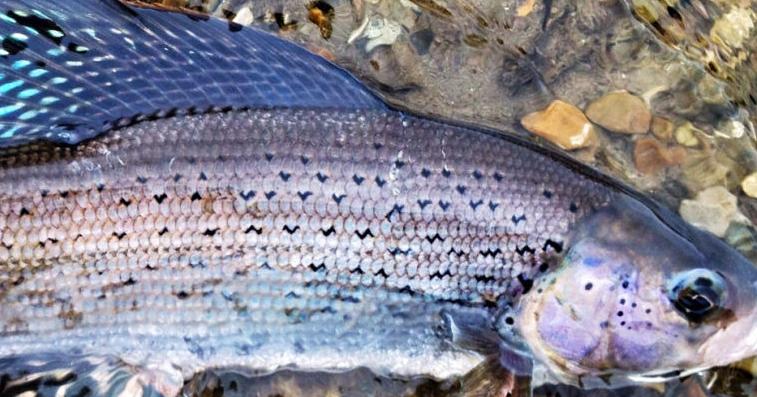Legal battles began in 1991 regarding the protection of the small populations of fluvial Arctic grayling in the Big Hole River and upper Madison River Basin under the federal Endangered Species Act.
A collection of related court filings, appeals, biological studies, op-ed laments, and more would challenge Atlas’s strength.
Now, a federal district court judge in Missoula, in a 53-page ruling dated Aug. 6, has sent the important decision back to the U.S. Fish and Wildlife Service for reevaluation.
Judge Dana Christensen’s order vacated the 2020 finding by the Fish and Wildlife Service that the fluvial Arctic grayling did not warrant listing under the Endangered Species Act in the upper Missouri River Basin.
The ruling instructed the service to make a new determination regarding the status of the upper Missouri River Basin distinct population segment of Arctic grayling within 12 months of the order.
People are also reading…
According to the Endangered Species Act, a distinct population segment is a discrete population or group of populations significant to the entire species.
The ruling by Christensen does not guarantee that the Fish and Wildlife Service will decide in favor of listing the grayling within 12 months.
Spokesperson Joe Szuszwalak mentioned that the agency is reviewing the decision and refrains from commenting on the litigation.
Native populations of Arctic grayling exist in specific areas such as the Big Hole River, Ennis Reservoir, Ruby River, and lakes in the Centennial Valley.
Patrick Kelly, a director for the Western Watersheds Project, one of the plaintiffs in the case, responded positively to the court’s decision.
He emphasized the importance of protecting Montana’s Arctic grayling and urged the Fish and Wildlife Service to base their decision on sound science without being influenced by economic or political factors.
While the judge’s ruling favored the plaintiffs in some aspects, there were also instances where the defendants, including the Fish and Wildlife Service, and Montana Fish, Wildlife, and Parks, prevailed.
Christensen’s ruling pointed out flaws in the Fish and Wildlife Service’s 2020 decision and highlighted the need to consider data regarding the grayling population’s size and the impacts of environmental factors.
The shrinking historic range of the fluvial grayling is attributed to various factors like habitat loss, competition with nonnative species, and climate change.
There was a disagreement regarding the viability of the grayling population in the Ruby River and the potential redundancy of species.
Noah Greenwald from the Center for Biological Diversity raised concerns about the lack of stable grayling populations in other rivers in Montana.
Additionally, the importance of CCAAs in protecting species at risk was highlighted along with efforts to renew the agreements beyond 2026.
The Big Hole Watershed Committee has played a crucial role in voluntary actions to enhance habitat and conservation efforts for the Arctic grayling.
Participants of the CCAA program in the Big Hole Valley have made adjustments to irrigation practices to address low flows and water temperature concerns.
Collaborative efforts between landowners, agencies, and conservation groups have shown positive impacts on the grayling population in the region.
Overall, the ruling emphasizes the need for a balanced approach that considers scientific data and conservation efforts to protect the Arctic grayling population effectively.
Raising awareness about the challenges faced by the grayling and other coldwater fish species is essential to ensure their long-term survival amidst changing environmental conditions.
Continuous efforts from stakeholders, researchers, and conservationists are vital in preserving the unique biodiversity and ecological balance in the region.
It is crucial to address the complex interplay of factors affecting grayling populations and implement sustainable conservation practices for the benefit of both the species and the ecosystem.





